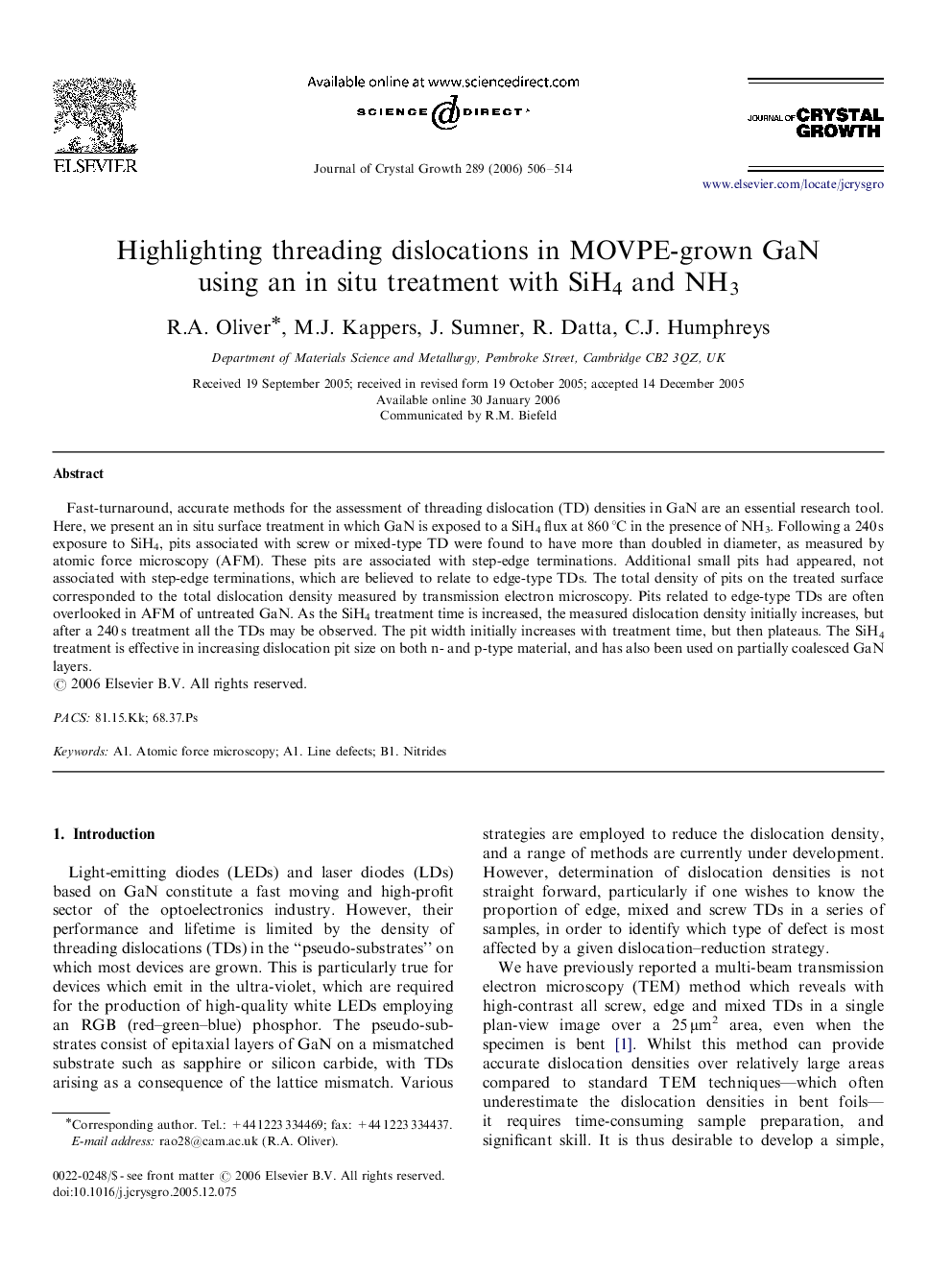| Article ID | Journal | Published Year | Pages | File Type |
|---|---|---|---|---|
| 1796614 | Journal of Crystal Growth | 2006 | 9 Pages |
Fast-turnaround, accurate methods for the assessment of threading dislocation (TD) densities in GaN are an essential research tool. Here, we present an in situ surface treatment in which GaN is exposed to a SiH4 flux at 860 °C in the presence of NH3. Following a 240 s exposure to SiH4, pits associated with screw or mixed-type TD were found to have more than doubled in diameter, as measured by atomic force microscopy (AFM). These pits are associated with step-edge terminations. Additional small pits had appeared, not associated with step-edge terminations, which are believed to relate to edge-type TDs. The total density of pits on the treated surface corresponded to the total dislocation density measured by transmission electron microscopy. Pits related to edge-type TDs are often overlooked in AFM of untreated GaN. As the SiH4 treatment time is increased, the measured dislocation density initially increases, but after a 240 s treatment all the TDs may be observed. The pit width initially increases with treatment time, but then plateaus. The SiH4 treatment is effective in increasing dislocation pit size on both n- and p-type material, and has also been used on partially coalesced GaN layers.
